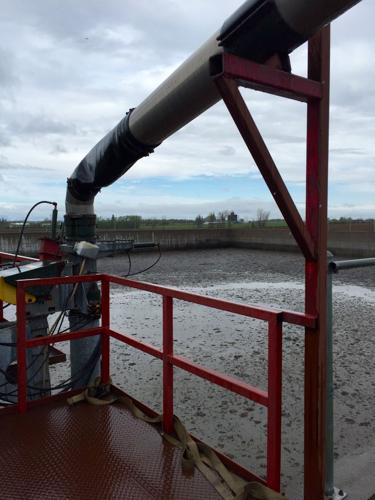When Bill Jones looked at a map of where farm-based digesters were located in New York State, he was a bit surprised to see that Cayuga County had about one-third of them. Living on Owasco Lake, Jones said he is aware of the blue-green algae blooms that have plagued the watershed. But seeing 10 locally based digesters, most of which break down thousands of gallons of manure to eventually be used as fertilizer, made him think the county would be a prime spot for CedarCreek Products and Technologies.
CedarCreek is a startup Jones is helping foster under the Rochester Institute of Technology's Technology Business Incubator. The business has developed a model to remove phosphorous from liquid waste, thereby hoping to remove thousands of pounds of nutrients from watersheds. While the model has already been produced and has been proven to work, CedarCreek is working to scale it up outside of an RIT lab setting.
People are also reading…
"The focus will be on nitrogen and phosphorous removal, being the hot topic in Cayuga County," Jones said. "I think literally Cayuga County is on the forefront because they've been doing very professional testing, and there's a lot of good people working on the problem."
Jones said the business has had a couple of Cayuga County farms interested in trying out the process, and he expects one will be chosen and the project will be up in running this spring.Â
Right now, the idea is for CedarCreek to set up equipment that can process about 100,000 gallons of manure per week. Jones said that could potentially remove 70,000 pounds of phosphorous from the watershed per module per year. Phosphorous if the leading cause of blue-green algae blooms, according to the U.S. Environmental Protection Agency.
Blue-green algae, also known as cyanobacteria, is a filmy, paint-like scum that has been dis…
"The advantages for Cayuga County would be a small amount of increased revenue for the farmers because dairy farmers are being crushed by the low price of milk right now," Jones said. "You'd be able to remove a significant amount of phosphorous from the watershed, and this would be able to create employment and economic development."
For farms with digesters that produce more than 100,000 gallons per week, CedarCreek would set up multiple modules around the digester. After the liquid manure is processed, Jones said there are some potential products that can be created from it.Â
One byproduct is a dried pellet fertilizer. If the pellets are sold and shipped elsewhere, those nutrients are removed from the watershed. If a farmer wishes to use the pellet fertilizer, however, Jones said some phosphorous may remain. That being said, Jones explained that pellets are easier to store than liquid manure.
"You're going to be able to store them, and not put them on frozen ground," Jones said. "If a farm doesn't need it, they can be sold outside the area. It's much easier and cost-effective to ship. Instead of having literally a truck taking this effluent and driving down the road and risking a manure-like spill, this stuff would be very benign and dried. It removes a whole safety (issue), and it's much more cost-effective."
The second product that could be potentially produced from the cow manure is an iron phosphate material that is useful in killing slugs and snails. Jones said CedarCreek is still determining whether it will create a special product with those snail-killing capabilities.
The business model is currently set up so that CedarCreek would be purchasing the farm's effluent, and making money by selling the byproducts. That way, Jones said, farmers do not have to buy the technology from CedarCreek and can make a little extra money.
Once CedarCreek is able to set up its equipment on a Cayuga County farm, it will conduct its demonstration for six months. Jones said the hope is to have a commercial product ready for the end of 2017. In the meantime, the Cayuga County Water Quality Management Agency has written a letter of support for the project while CedarCreek seeks state funding to help bolster its efforts.Â
It's another potential tool in the pipeline, the agency acknowledged at its meeting this month, for removing nutrients from Owasco Lake.
"We're talking tens of thousands of pounds (of nutrients removed)," Jones said. "It's important that we're not saying we're going to immediately decrease the number of toxic algae blooms, but it definitely would help in the long run. Cayuga County can become a national leader in watershed nutrient management."
Staff writer Gwendolyn Craig can be reached at (315) 282-2237 or gwendolyn.craig@lee.net. Follow her on Twitter @gwendolynnn1.






















